Perspectives on the Book "Kashf al-Zunūn", and the Methodology of Its Critical Editing
Round table meeting on Hajji Khalifa and his capital work "Kashf al-Zunun"
By Professor Ekmeleddin İhsanoğlu and Professor Bashar Awwad Marouf
On Friday, 25 March 2022CE, the lecture theatre at the Research Centre for Islamic History, Art and Culture (IRCICA) in Istanbul witnessed a roundtable meeting on “Ḥājī Khalīfah and his encyclopaedic book: Perspectives on the book, “Kashf al-Żunūn”, and the methodology of its critical editing” delivered by both Professor Ekmeleddin İhsanoğlu and Professor Bashar Awwad Marouf. The event was organised by the Research Centre for Islamic History, Art and Culture (IRCICA) in cooperation with the Centre for Study of Islamic Manuscripts at Al-Furqān Islamic Heritage Foundation. The audience was graced by a company of critical edition scholars, doctoral students, researchers, and representatives of cultural bodies, as well as some media organisations.
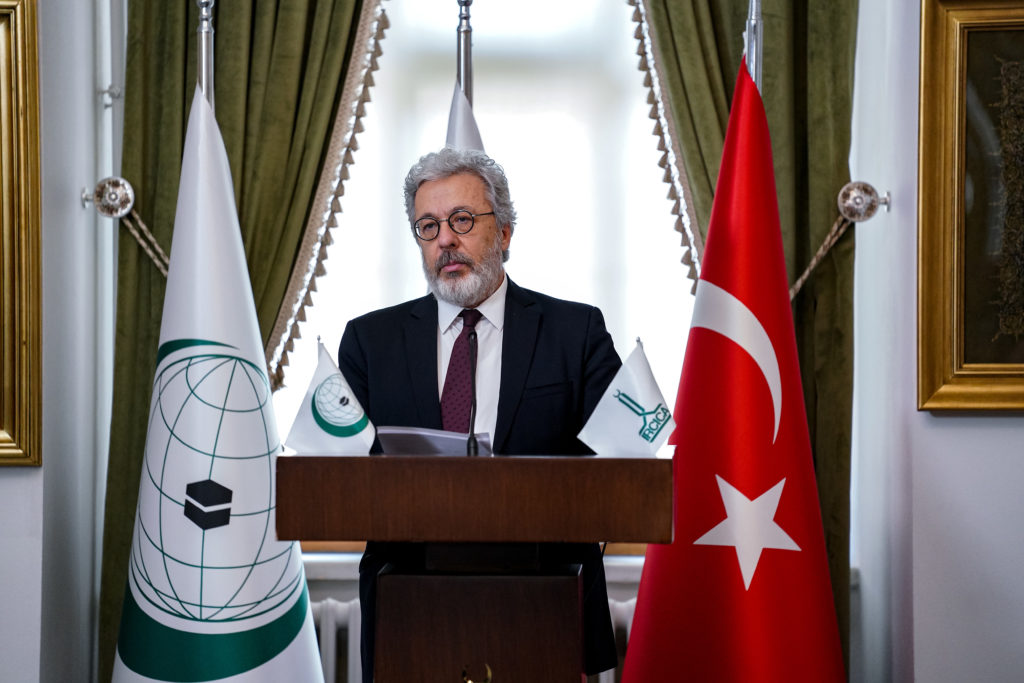
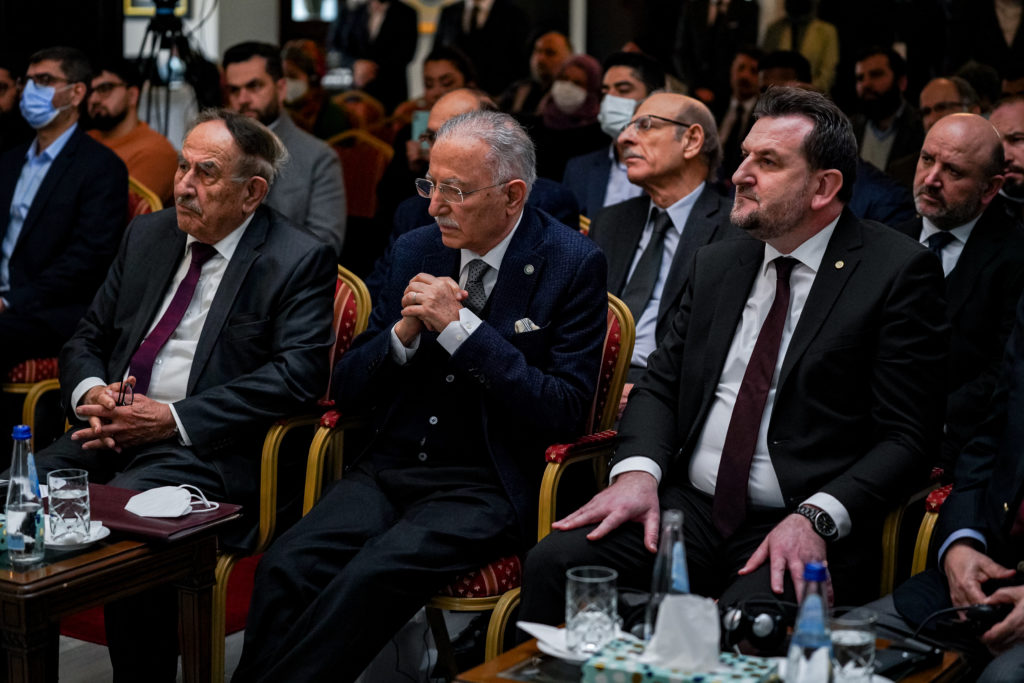
The session opened with a recitation from the Noble Qur’ān, followed by the inaugural, welcome speech by Prof. Dr. Mahmud Erol Kılıç, Director General of IRCICA, who welcomed the audience, and expressed his pleasure at the fruitful cooperation between the Research Centre for Islamic History and Al-Furqān Foundation. He promised that in future the Centre would be organising several activities in this domain.
Professor Ekmeleddin İhsanoğlu was then invited to speak, addressing the first part of the roundtable’s title, in a talk titled “Kâtip Çelebī/Ḥājī Khalīfah: last of the grand Muslim encyclopaedists”

Professor Ekmeleddin İhsanoğlu began by giving a comprehensive overview of Kâtip Çelebī’s life, scientific legacy, and cultural eminence. He described him as absolutely one of the most prominent scholarly personalities known to the Islamic world in the 11th Hijri Century/17th Century CE (the beginning of the period of Muslim decline). Ḥājī Khalīfah dedicated his energy and life to gathering, documenting, and disseminating knowledge. He memorised the Noble Qur’ān, and from a very young age applied himself to specialising in the Islamic law (sharī‘ah) disciplines, and mastering the mathematical sciences, arithmetic, natural sciences, and calligraphy. He was proficient in Farsi and Persian literature, as well as Arabic. He would author in Arabic, Turkish, and Persian, all at the same time. He would address the Ottoman elites and statesmen in the capital in Turkish, and scholars and intellectuals in Arabic. In addition, he was open to, and interested in, European culture and science, and worked assiduously to translate some European works on history and geography. Indeed, his attempts to benefit from Western sources in his writings, allowed him to occupy a fitting place among those early pioneers, who established the first connections between East and West.
The lecturer added that among the key features that granted Ḥājī Khalīfah prominent place in both East and West, is his diligence in searching for the truth, and his courage in presenting, and defending his ideas; moreover, his courage in treating controversial topics and areas of dispute with neutrality. Westerners spoke highly of him and his works; one orientalist going so far as describing him as the Turkish “al-Ṣuyūṭī”.
His original name is Muṣṭafā ibn ‘Abd Allāh, but was well-known amongst the city’s scholars as “Kâtip Çelebī”, while in government (diwān) circles, he was known as “Ḥājī Khalīfah” [the word, khalīfah, in Ottoman terminology signified chief or head clerk]. Whenever he introduced himself, he would say: “Ḥanafī in school of jurisprudence, Sufi in edification”, and “of Constantinople in birth and home”.
He spent around ten years accompanying the army in different wars and campaigns, including the Tirjan and Iraq campaign, Hamdan and Baghdad campaign, Rawan campaign, and the siege of Erzurum.
Professor Ekmeleddin İhsanoğlu mentioned how Ḥājī Khalīfah would spend every bit of money that came his way to buy books. While residing in Aleppo, he began to record the names of the books he saw in booksellers’ shops. By inclination, he tended to read books on history, biographies, and obituaries more than other genres.
Regarding his personality, he enjoyed a good reputation, and gained the appreciation and respect of people in his lifetime, and after his death. He was a person of vigour, endowed with good qualities, sparing in words, wise in inclination.
The lecturer reminded the audience that the many works left to us by Kâtip Çelebī demonstrate encyclopaedic knowledge, and in-depth presentation of Islamic civilisational heritage. No doubt, his book “Kashf al-Żunūn ‘an Asāmī al-Kutub wa al-Funūn”, which became a principal and indispensable reference for students of Islamic civilisation, is the best evidence of Kâtip Çelebī’s encyclopaedic knowledge, his objective and critical mind-set, and analytical faculty.
Following extensive explanation of the stages of Ḥājī Khalīfah’s life, and his personality, he began to enumerate his most important works, whether authored in Arabic, such as “Sulam al-wuṣūl ilā ṭabaqāt al-fuḥūl” and “Kashf al-ẓunūn ‘an asāmī al-kutub wa al-funūn”, or in Turkish, such as “Tuḥfat al-kibār fī asfār al-biḥār”, “Taqwīm al-tawārīkh”, “Tārīkh Frankī tarjamah sī”, “Tārīkh Qasṭanṭīniyyah wa qayāṣirah”, “Irshād al-ḥayārā ilā tārīkh al-Yūnān wa al-Rūm wa al-Naṣārā”, “Bayḍāwī tafsīrink sharḥī (explication of al-Bayḍāwī’s exegesis)”… etc. or authored in both Arabic and Turkish, such as “Fadhlakah”, or in the three languages, such as “Tuḥfat al-akhyār fī al-ḥikam wa al-amthāl wa al-ash‘ār”.
Professor Ekmeleddin İhsanoğlu concluded his talk saying that Kâtip Çelebī died on Friday, 27 Dhul-Hijjah 1067AH/ 6 October 1657CE; he felt unwell while drinking his morning coffee. The cup fell from his hand and he died suddenly.
The erudite scholar Professor Bashar Awwad Marouf followed, beginning by stating that “Kashf al-ẓunūn ‘an asāmī al-kutub wa al-funūn” is considered the largest bibliographic dictionary in Islamic heritage, and the most important book on the history of Islamic literature up to the 11th Hijri Century, and the most important of knowledge encyclopaedias in Islam’s history. This unique and exceptional book is also considered the mainstay and principal reference for practitioners working in the heritage domain. It enjoys great importance among researchers, students, and critical editors, as they all frequently refer to it, and depend upon it in their research, studies, and critical editions. This is evidence of the extraordinary encyclopaedic genius of Ḥājī Khalīfah, may Allah have mercy on him.

The lecturer added that Muslims from early times had paid attention to authoring books dedicated to surveying authored works; al-Nadīm authored the “Fihrist”, while Ibn al-Sā‘ī authored “al-Durr al-thamīn fī asmā’ al-muṣanifīn”. Other than these two books, no one before Ḥājī Khalīfah had thought of such a scientific encyclopaedic work tracing the movement of Islamic heritage. Indeed, this enlightened Ottoman scholar gathered this huge volume of authorship in what is a paradigm shift, and advanced thinking in presenting seminal works, and those works dedicated to their explication, commentary, or glosses. This initiative is considered a significant shift in the history of Islamic thought, which in those times had witnessed great stagnation, and scarce creativity. Hence, this book was one that occupied a prominent place in the regard of later scholars, as evidenced by the proliferation of addenda and errata published in this book. Indeed, we find the Europeans taking keen interest, and undertaking critical edition, printing, and translation into Latin. Perhaps, those concerned with the survey of Islamic and Arabic heritage in our times, such as Carl Brockelman and Fuat Sezgin were among those influenced by Ḥājī Khalīfah’s exemplary work in his time.
Professor Bashar Awwad Marouf drew the audience’s attention that among the notable merits of Ḥājī Khalīfah, is that great energy and motivation in gathering the explications, abridgements, and poetic compositions (nadhm) of many renowned seminal works, which Muslims have been concerned with commenting upon, explaining, adding glosses, abridging, or converting into poetry; this was an unprecedented, pioneering idea, which many are incapable of grasping.
Following extensive praise of the author, Professor Bashar Awwad Marouf reminded the audience that despite his significant ambition and enlightened thought that led to authoring this book, the man was weak in knowledge of heritage. Indeed, he was not an encyclopaedist endowed with extensive knowledge of the sciences and related authored works. Therefore, he fell into many errors, especially in scholars’ names, biographies, and dates of demise, and in the titles of their works, attributing some books to other than their true authors. He emphasised that the appendix he and his team had created, which presented his errors in over 650 pages, forming the eighth volume of this book, is testimony to that. He added that we should be fair to the man, as he had invaded a topic that exceeded the ability of many scholars, where his errors are forgiven and subsumed in the novel idea that he attempted to accomplish in those inferior times, overwhelmed by stagnation, backwardness, and limited creativity.
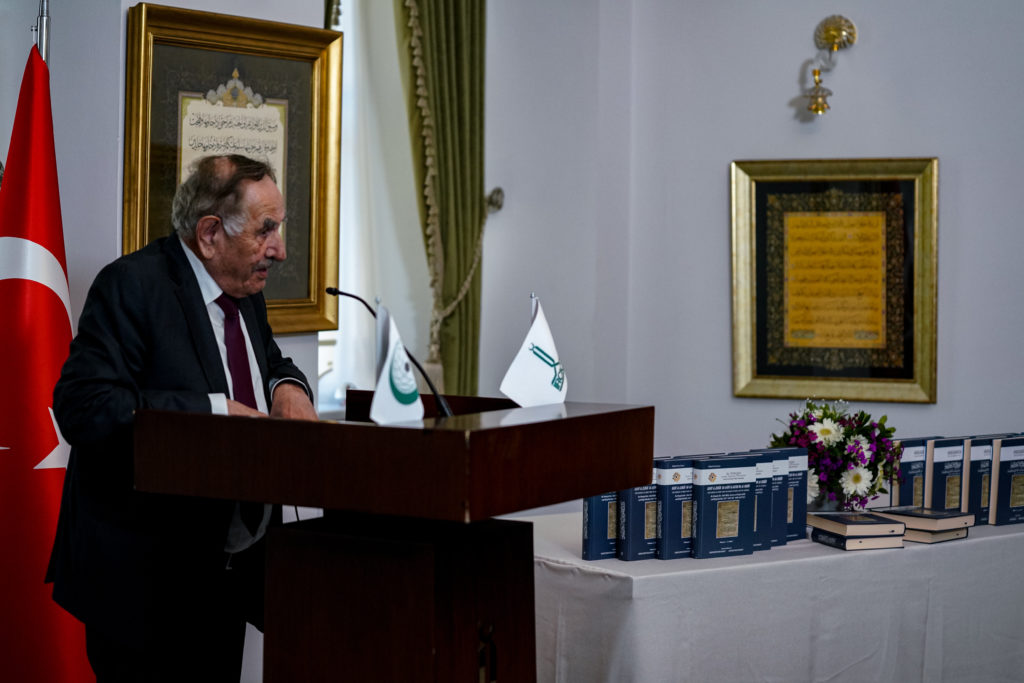
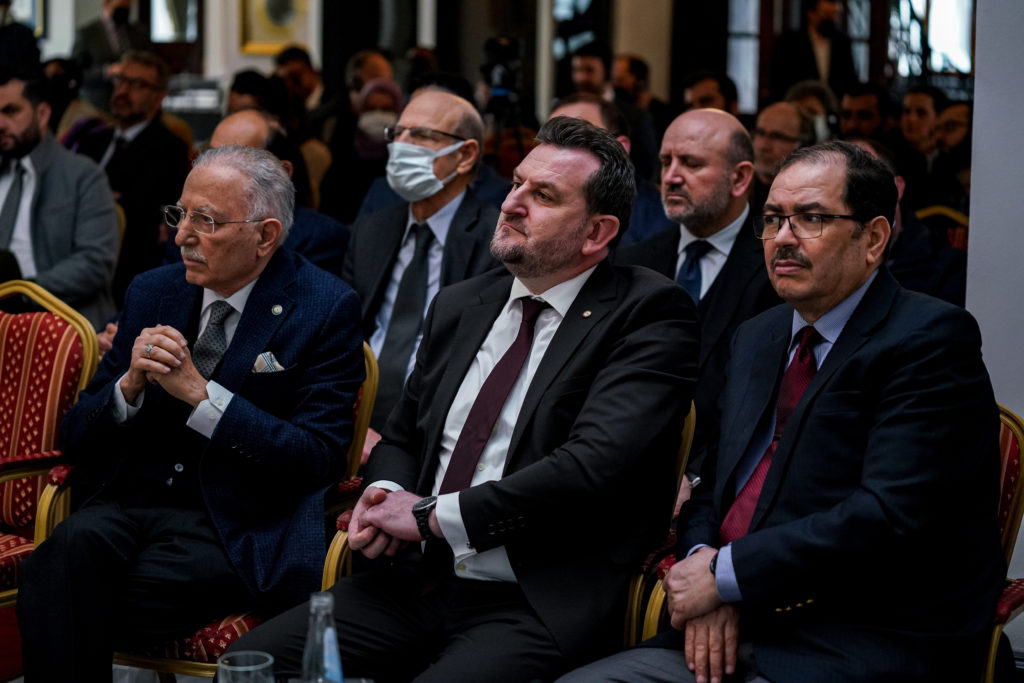
The lecturer drew attention to a very important point, in that Ḥājī Khalīfah was not content with only mentioning Arabic works, but also those authored in Turkish and Farsi. He spent twenty years gathering the material for the book, and writing the rough draft, before beginning work on the fair copy. It was while writing within the letter “dāl” that he passed away, may Allah grant him mercy, leaving behind the unfinished fair copy and full rough draft. The author had been concerned with mentioning the names of books and disciplines; he would mention, and define the discipline based on “Miftāḥ al-sa‘ādah” by Ṭāsh Kubrī Zādah in most instances, while making some corrections. He would then present the names of the books in alphabetical order, mentioning their authors, where possible. He would then follow with those authored explications, abridgements, and glosses related to that book; he would perhaps indicate the book’s topic, or reproduce its beginning, particularly for those authored works where he had perused copies.
As a result of this book’s great importance, the Europeans critically edited, printed, and translated it into Latin— Europe’s language of learning until recently. Flügel, the German orientalist, critically edited the book, publishing the first two volumes during the years 1835 - 1858CE in Leipzig. The third to seventh volumes with indices were then printed in London. Subsequently, two Turkish scholars republished the book depending on the European edition, while collating it against the author’s handwritten fair and rough copies. Sadly, these two editions fell far short of the scientific method of critically editing manuscripts. They took liberties with the text, adding and deleting, changing many of the sentences, thinking that this would ease understanding of, and improve the text. In addition to interpolation, of which no page of their editions was free.
Professor Bashar Awwad Marouf then presented the methodology adopted in the critical edition, adding that he and his team of critical editors had granted special importance to detailing the text, in terms of highlighting the books’ names, and those explications, glosses, and abridgements arising, and everything related to them. They created a number for each work, beginning with a new section. These numbers are replicated in the book’s indexes to allow easy reference and greater benefit. They also divided the text, in regards to the beginning of sections, adding diacritical and punctuation marks, etc. so as to bring out the meanings and clarify the text; in addition, endowing the text with vowel marks, due to their great importance in the correct reading of the text, and in the belief that critically editing texts without adding vowel marks is not considered robust critical edition. Adding vowel marks to texts that are devoid of them, demonstrates that the critical editor is capable of correct reading and sound understanding of the text, as intended by the author.
The lecturer concluded his presentation by saying that he and his team had decided that it was advantageous to add a number of indexes to facilitate benefiting from this important text. They created an index of authors’ names mentioned in the book, another with the titles of authored works, a third with the names of the disciplines mentioned in the book, a fourth with the names of places and regions, and fifth, the journal of sources and references adopted in the book’s critical edition.
Mr Sali Shahsivari, Managing Director of Al-Furqān Islamic Heritage Foundation, then spoke welcoming the audience, and thanking the two lecturers on their beneficial and engaging discourses. He also expressed his overwhelming pleasure in the fruitful cooperation between Al-Furqān Foundation and the Research Centre for Islamic History, Art and Culture (IRCICA).
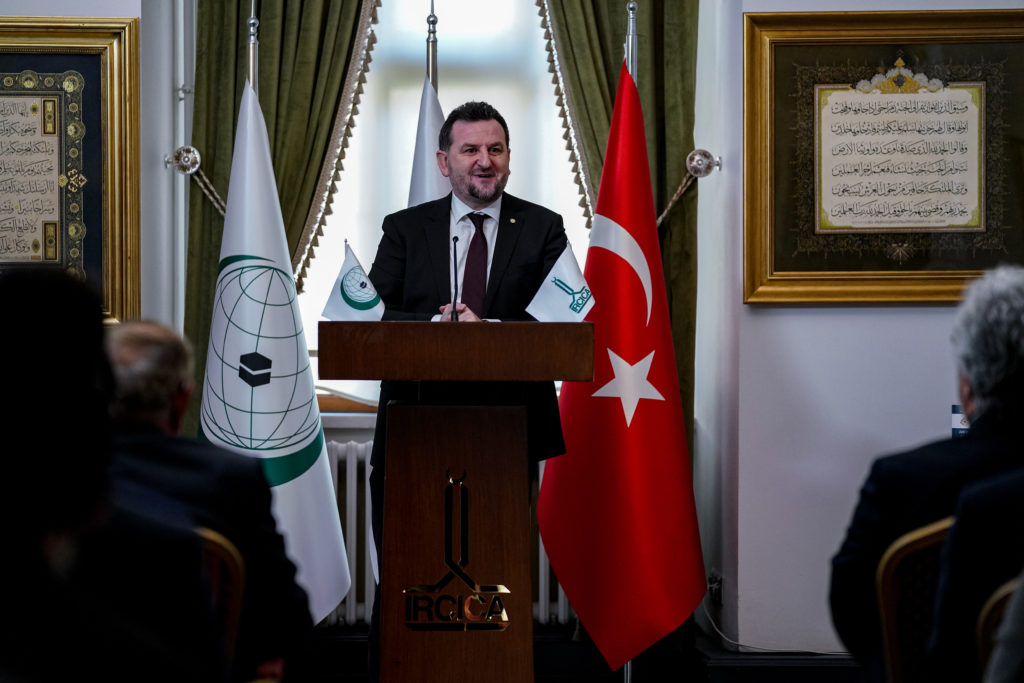
Following these engaging presentations, the opportunity was given for questions and commentary; broad, and extensive discussions ensued, with profound comments made, and important questions posed, on the topics raised at the roundtable, with the participation of a number of scholars and researchers, as well as some cultural personalities and others.
This entertaining and beneficial encounter was well received, greatly impressing all who attended.

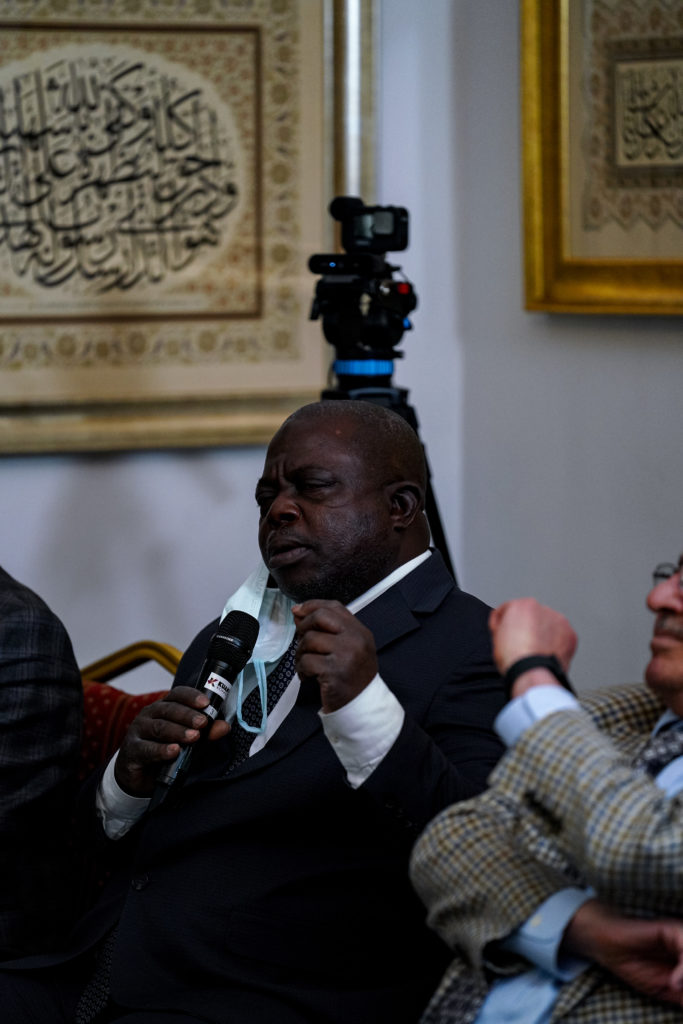
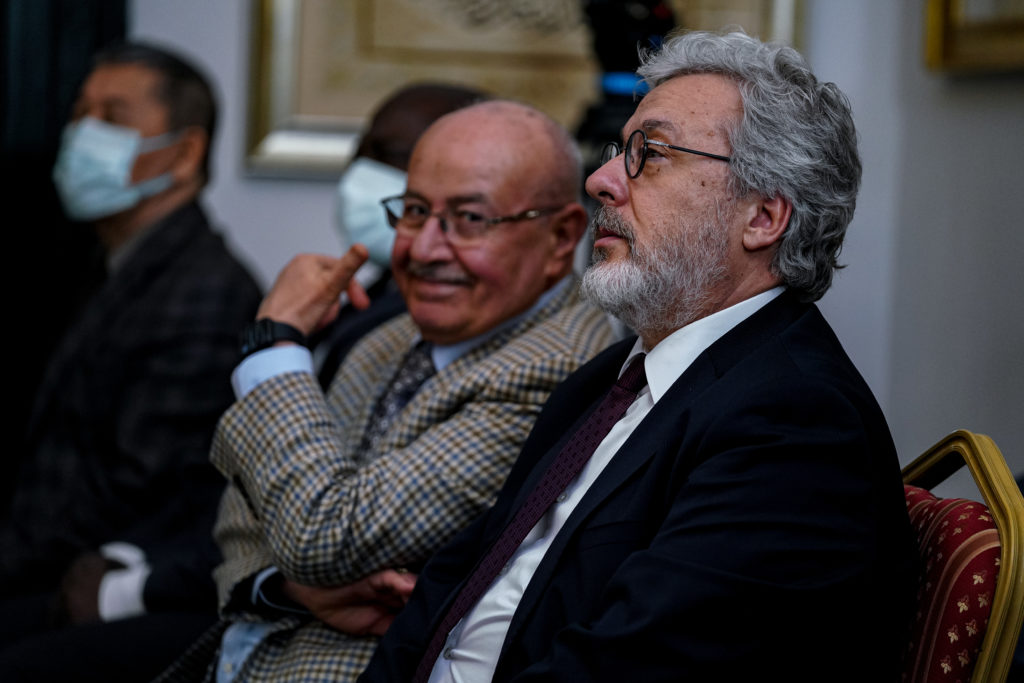
Related Video:

